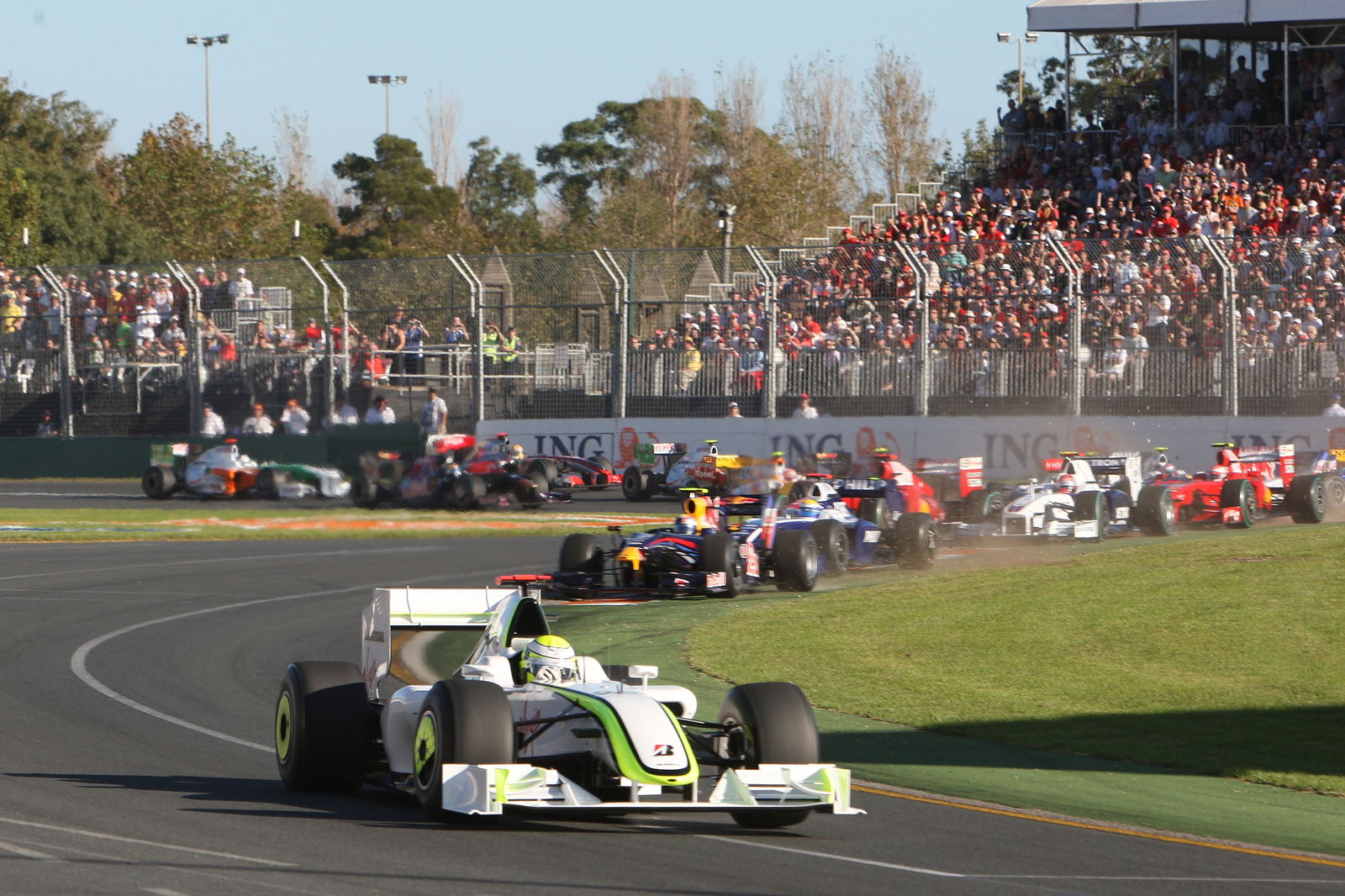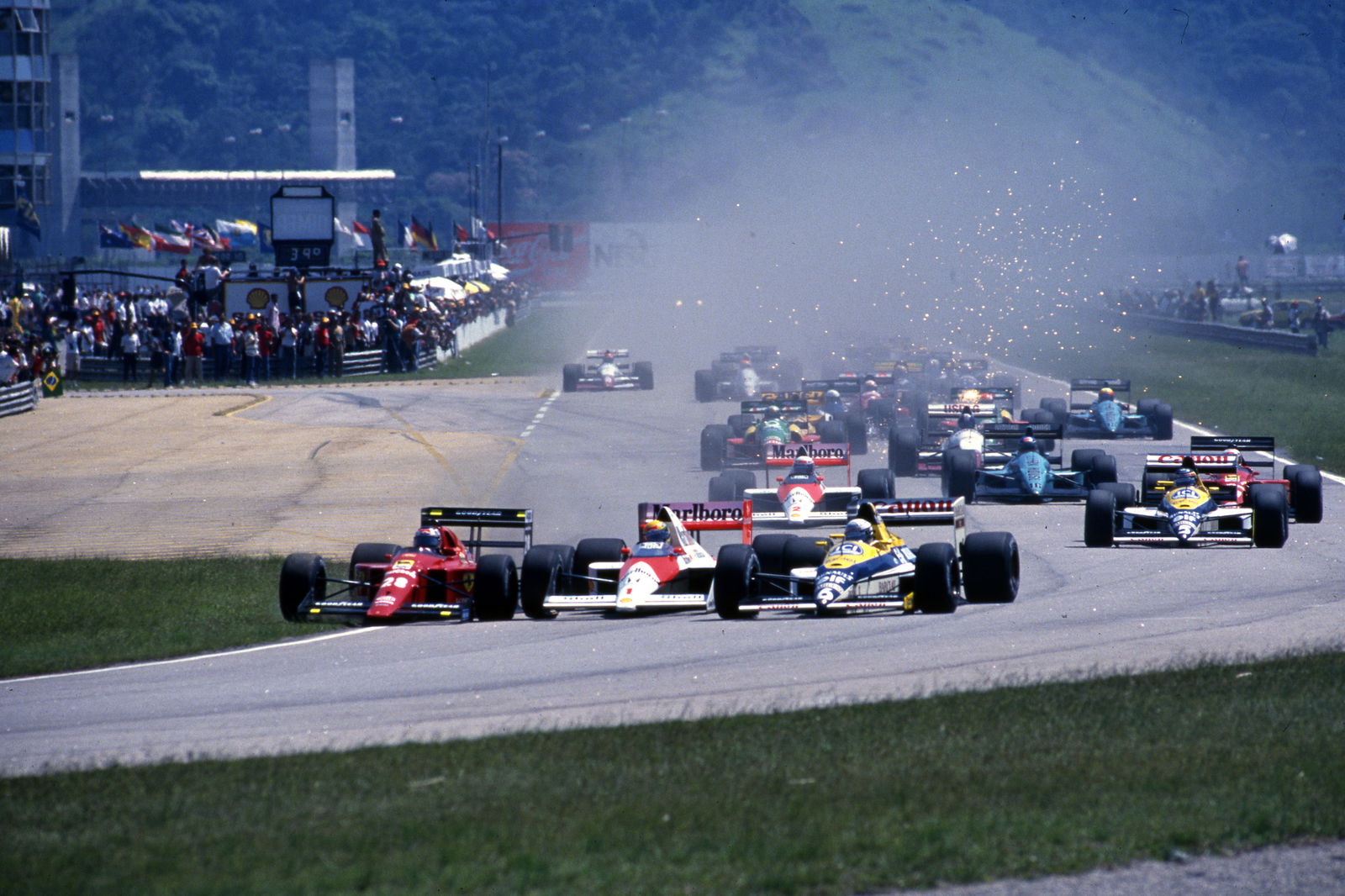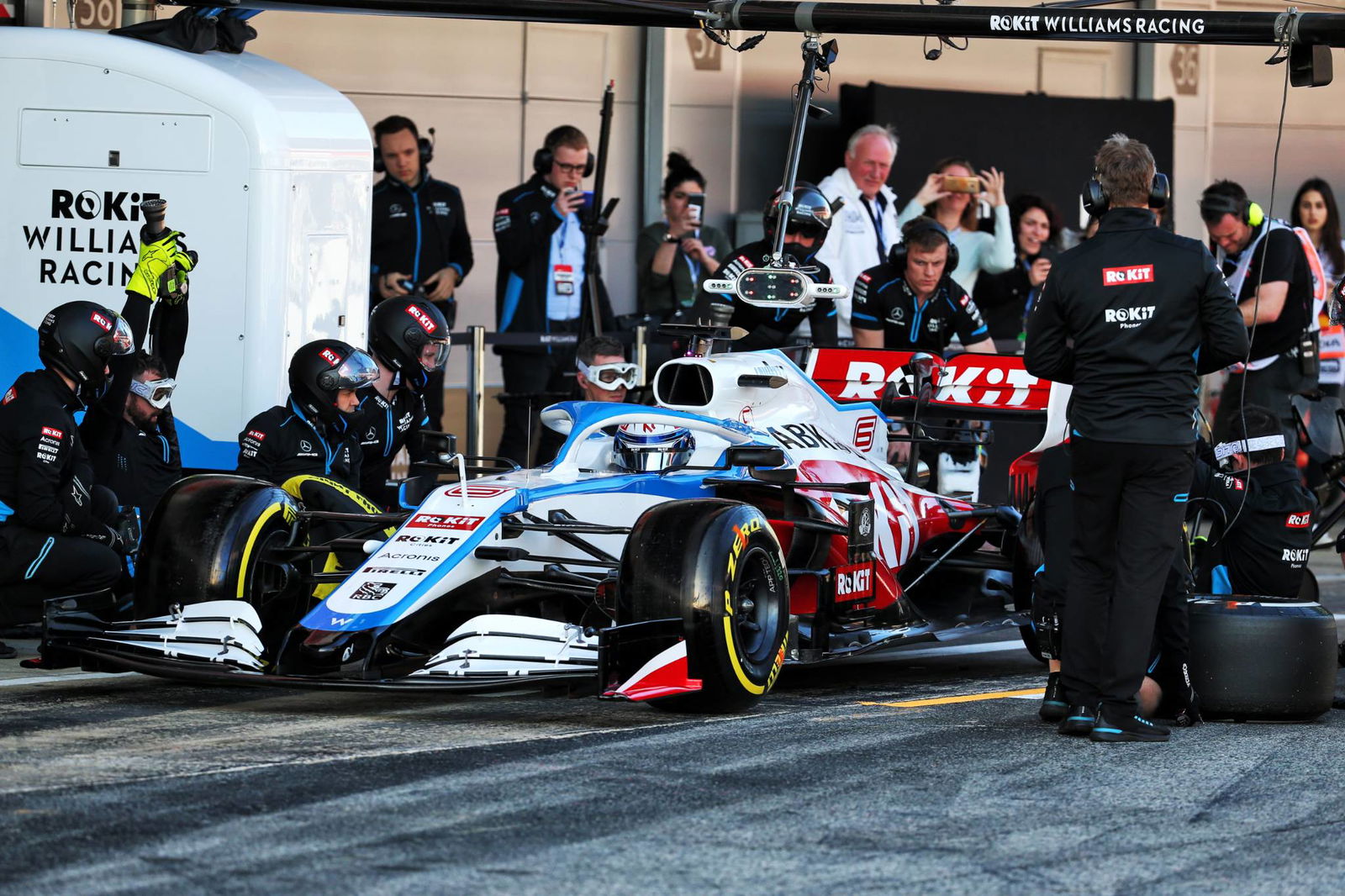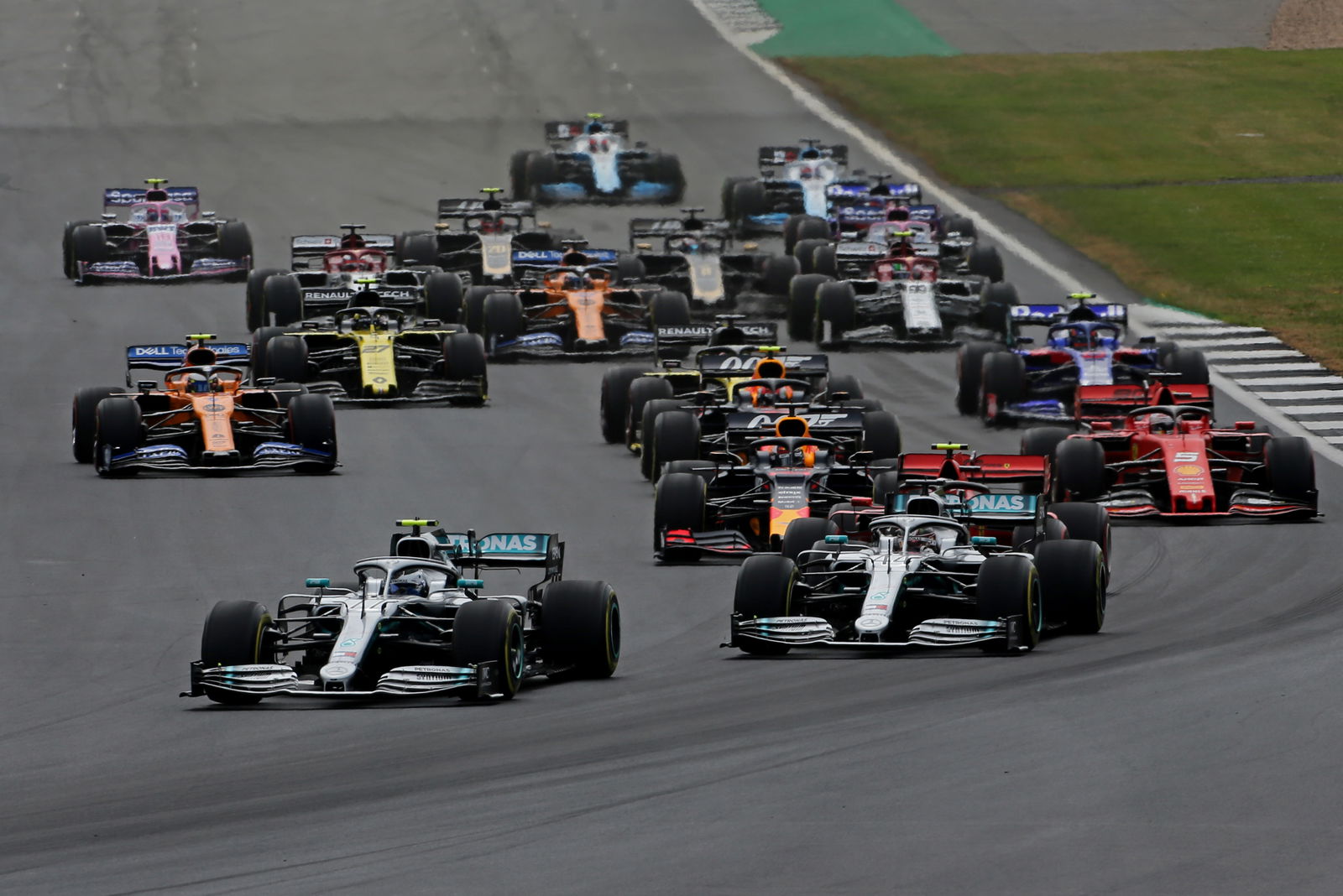The craziest opening races in F1 history
While the wait for the start of the 2020 Formula 1 season continues due to the prolonged break caused the ongoing COVID-19 pandemic, we've taken a look back at some of the craziest opening races throughout history.

While the wait for the start of the 2020 Formula 1 season continues due to the prolonged break caused the ongoing COVID-19 pandemic, we've taken a look back at some of the craziest opening races throughout history.
With F1 planning to return with a series of behind closed doors European races starting in Austria on July 5, drivers are faced with the prospect of a minimum four-month spell since they last drove their cars. Renault's Daniel Ricciardo has predicted a chaotic first race as a result of the prolonged break.
Ricciardo's comments got us thinking about other opening rounds that got the F1 campaign off to a dramatic, or plain unusual start...
2016 Australian Grand Prix
A race overshadowed by F1’s controversial introduction of a new elimination-style qualifying system saw Nico Rosberg begin his charge to the title in perfect fashion, leading home Lewis Hamilton in a Mercedes 1-2.
There was drama before the lights went out as Daniil Kvyat’s Red Bull ground to a halt on the grid. When the race got going, Sebastian Vettel jumped into the lead ahead of the Mercedes duo with a stunning launch, while Hamilton dropped back to sixth after being edged wide by Rosberg at Turn 1.
The race was interrupted by a red flag following a huge incident involving Haas driver Esteban Gutierrez and Fernando Alonso on Lap 17 that saw the McLaren driver spectacularly barrel-rolling into the gravel at high-speed, before coming to a rest upside down up against the barriers. The impact registered a peak of 46-G but Alonso was, remarkably, able to walk away unscathed.
2009 Australian GP
Brawn GP made a sensational start to its new era after stunning the opposition during pre-season testing with its innovate BGP 001 design amid a major regulation overhaul.
Jenson Button completed a brilliant lights-to-flag victory ahead of teammate Rubens Barrichello as incident-aplenty occurred behind them with a messy start and end to the race.
In the closing stages, Robert Kubica and Sebastian Vettel came to blows while squabbling over second place. Both men crashed out and caused the race to end behind the Safety Car. The drama continued afterwards with McLaren’s infamous ‘liegate’ scandal which had seen Lewis Hamilton inherit the final podium position after Jarno Trulli was penalised for overtaking under Safety Car conditions.
Following an investigation, McLaren and Hamilton were found to have deliberately misled the stewards and were subsequently disqualified, with Trulli earning his rightful third-place finish.

2002 Australian Grand Prix
The 2002 season started with a bang when Rubens Barrichello and Ralf Schumacher collided on the run to Turn 1. In total eight cars were caught up in the massive first-lap incident and eliminated the spot, as Schumacher ended up dramatically shooting through the gravel and into the barriers.
More incidents following in the eventful race as Jarno Trulli crashed out of second place while under pressure from Michael Schumacher’s Ferrari. David Coulthard lost the lead due to a gearbox failure in his McLaren, with Schumacher ultimately going on to seal victory following a scrap with Juan Pablo Montoya.
With just eight cars making it to the chequered flag, Mark Webber claimed fifth place in his Minardi to register his first-ever points finish in F1, much to the delight of his home crowd.
1998 Australian Grand Prix
A race that was not particularly memorable for its on-track racing but for the controversy which shrouded how the winner was decided.
A misheard radio call - or radio hack according to Ron Dennis - led Mika Hakkinen to squander his comfortable lead by driving through the pitlane without stopping.
McLaren teammate David Coulthard inherited the lead as a result, only for the Scot to slow on the pit straight to allow Hakkinen back past into first place with only a few laps remaining.
Coulthard was sticking to a pre-race agreement that whichever driver led into Turn 1 would win the race but the farcical situation caused yet more debate over the use of team orders, which were outlawed followed the 2002 Austrian Grand Prix but re-allowed after the 2010 German Grand Prix.
1996 Australian Grand Prix
Poor Martin Brundle. You carve a fairly impressive career for yourself in F1 before assuring your legacy as a knowledgeable and animated TV commentator thereafter, and yet it’s this wild accident at the start of the 1996 Australian Grand Prix that remains his most viral moment to this day.
The event was already significant for it being the very first Australian Grand Prix to be held around the Albert Park Circuit in Melbourne, just a few months after Adelaide concluded the 1995 season with its final sojourn around its street venue.
However, it was Brundle in his first race for Jordan-Peugeot that would steal the headlines when he was caught out by the concertina effect under braking into the turn three right-hander on lap one.
With cars scattering ahead after David Coulthard struck Johnny Herbert, Brundle arrived to strike the back of the Sauber in front and catapult over them into a barrel-roll.
With his Jordan breaking into two pieces as it came to rest, incredibly Brundle emerged unscathed and in the era of spare cars even made the grid again on the restart… only to retire on lap when he tangled with Pedro Diniz.
1990 United States Grand Prix
Sometimes all it takes for a crazy race to occur is a mixed-up grid, as demonstrated in the 1990 F1 opener held around the right-angled bends of the happily forgotten Phoenix street circuit.
After the race was moved from its sweltering summer spot to a cooler season opening date, F1 got more than it bargained for when rain washed out Saturday qualifying meaning the times from Friday instead stood. As a result, Gerhard Berger landed on pole for McLaren, followed by Pierluigi Martini in a Minardi, Andrea de Cesaris in a Dallara and Jean Alesi in the Tyrrell.
Competing in only his seventh F1 start, Alesi powered into the lead from the second row and proceeded to control the race for the opening half of the race, opening up an eight second lead at one stage. Alas for him, Ayrton Senna had ascended to lead the chase and the wily Brazilian duly managed to make up the ground but not before the Frenchman to show his mettle by having the sheer audacity to re-pass.
In the end, Senna got back ahead and held firm for victory by eight seconds from the impressive Alesi, whose efforts were at least represented by the huge 46secs advantage he held over third place Thierry Boutsen.
1989 Brazilian Grand Prix

Season openers in the 1980s were a heady blend of big grids and woeful reliability – even among the top teams - which often gave rise to some unusual results that didn’t quite reflect the natural order for the year ahead.
This was particularly apparent in 1989 when F1 raced at Jacarepagua with just six cars finishing on the lead lap on its swansong visit. However, while the final result of Nigel Mansell defeating McLaren’s Alain Prost doesn’t reveal too much about the race on paper, it disguises the fact it could have easily been Derek Warwick in an Arrows lifting the winners’ trophy.
The Briton was running strongly in the Ford-powered car to get himself into contention, only to lose 25secs during a pit-stop when the rear wheel jammed. Remarkably, he went on to finish in fifth place, but given he was just 18secs from the lead at the finish, it was certainly a case of ‘what could have been’.
Still, he fared better than team-mate Eddie Cheever, who found it so difficult to get himself out of his car after an innocuous crash that he ended up collapsing from the strain of doing so. Meanwhile, Mauricio Gugelmin become a home hero with a surprise run to third in the Leyton House March car, while Johnny Herbert scored a brilliant fourth place on his F1 debut with Benneton even though he was still recovering from the foot injuries he suffered in an almost career-ending smash a few months earlier.
The strangeness didn’t end at the chequered flag though, with Mansell managing to seriously cut his hand while holding onto the trophy’s visibly sharp handles, causing him to bleed profusely. Perhaps Warwick was lucky not to win after all…
1955 Argentina Grand Prix
Wrestling an F1 car around a circuit in sweltering conditions is tough by even the fittest drivers’ standards but for those competing in the 1955 opener in Argentina, the challenge was even more extreme.
Held in January – where temperatures average 29 degrees – the Buenos Aires race proved to be a particularly hot one even by Argentina’s standards, so much so that most teams opted to swap around their drivers Le Mans-style in an effort to get the car to the end.
While this was permitted at the time, it meant Ferrari’s Nino Farina and Maurice Trintignaut were each classified both second and third having jumped into the #12 and #10 cars for a stint that allowed the car to complete the full gruelling 96 laps.
Shout-out to both Juan Manuel Fangio and Roberto Mieres though for going solo in their run to victory and fifth place respectively…
Additional reporting by Ollie Barstow.


